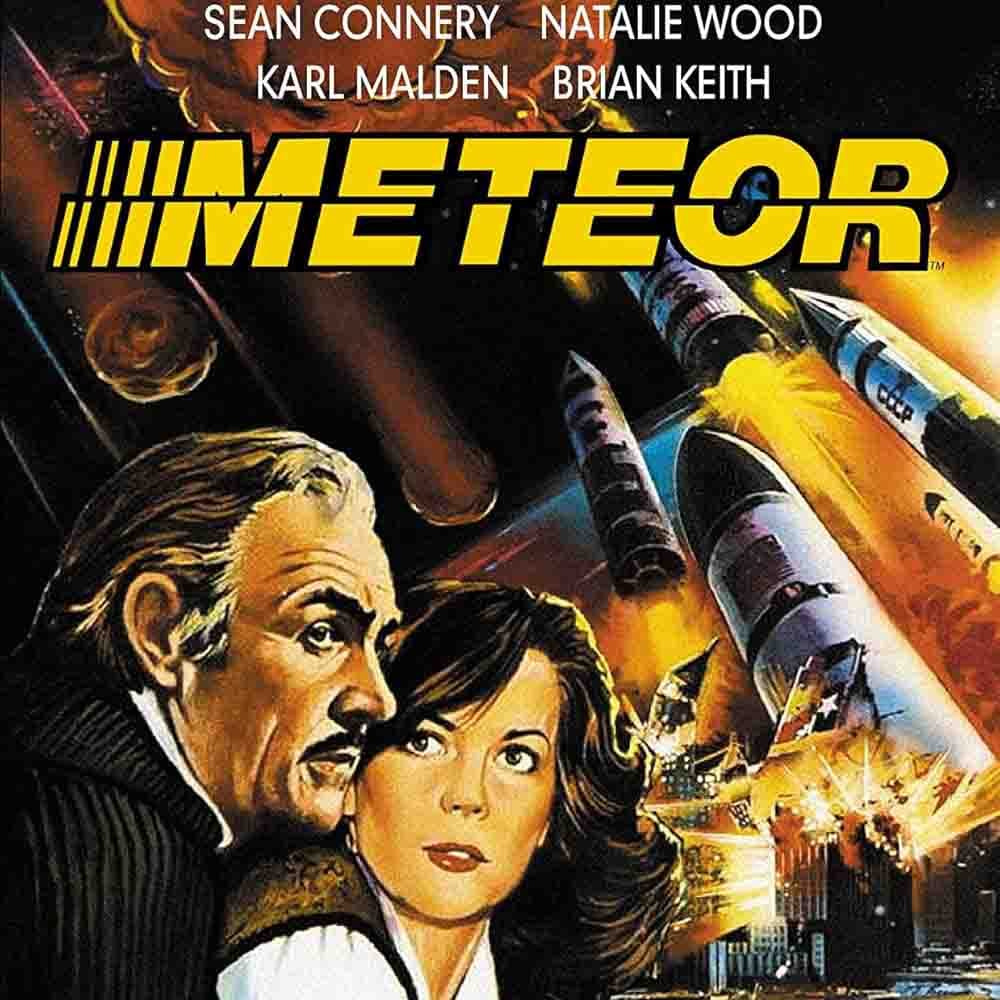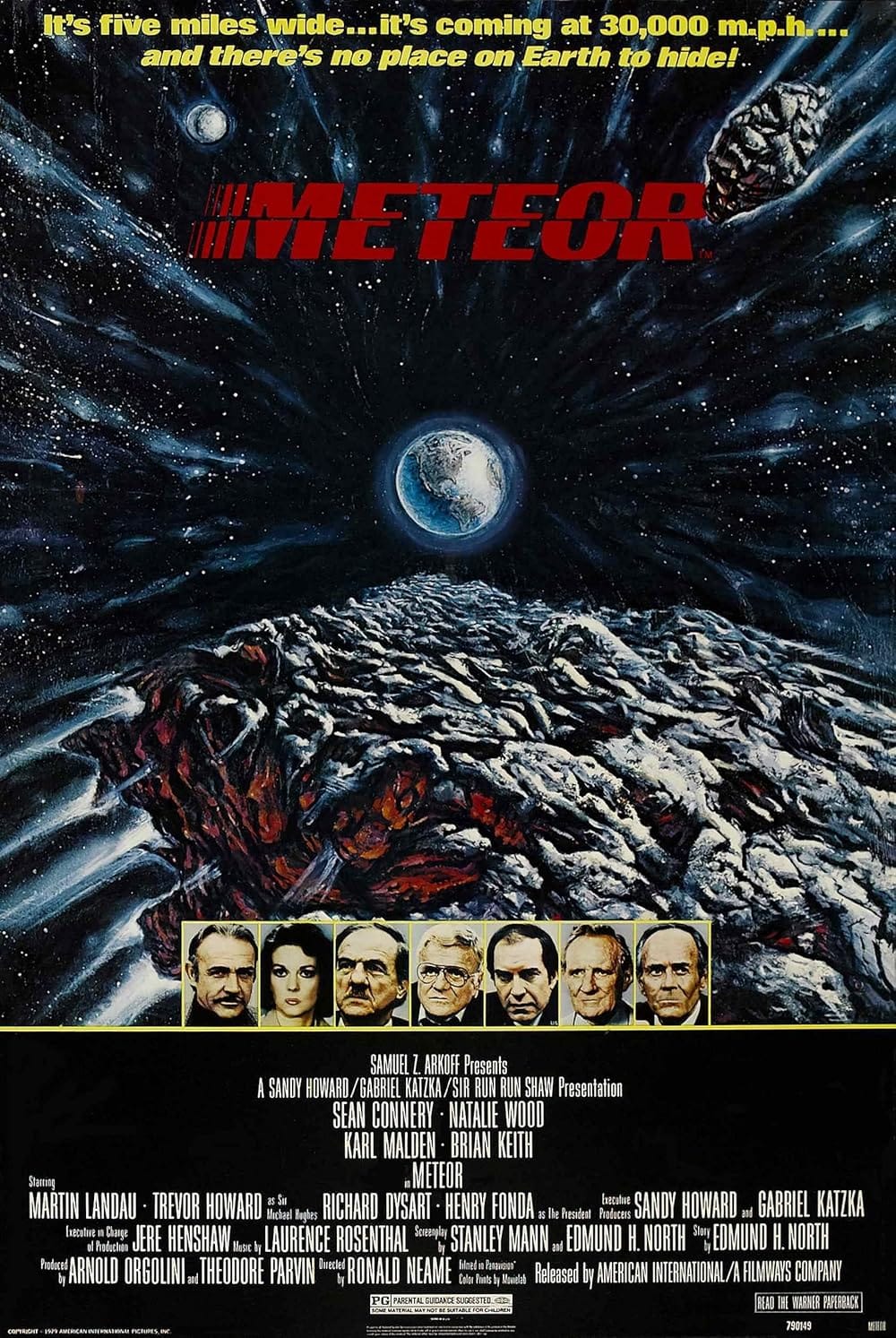Canadian camera captures celestial collision
Indignity Vol. 5, No. 9

CLOSE ENCOUNTERS DEP'T.
Meteor Hits Prince Edward Island on Video
A METEOR RECENTLY smashed into the walkway outside someone's house in the unincorporated community of Marshfield, on the outskirts of the city of Charlottetown, on Prince Edward Island, in Canada. The impact was an extremely rare event, but surveillance is now extremely common, and so it was caught on the house's security camera, complete with sound. It was apparently the first time a meteor hitting the earth has ever been directly captured on audio and video.
CHARLOTTETOWN – A P.E.I. resident’s home security camera captured video and audio of a meteorite crashing onto the walkway outside his front door.
— Winnipeg Free Press (@winnipegfreepress.com) 2025-01-14T21:19:30+00:00
A meteor impact—at least, this meteor impact—turns out to look like a sudden burst of dust and to make an unexpectedly high-pitched crunching sound. Other meteor impacts may, and in theory should, look and sound different, but other meteor impacts have not yet been recorded on security cameras for comparison.
The Canadian Broadcasting Company reported that the homeowner regarded the incident as a near miss, because they had been on the walkway not long before. "If I'd have seen it, I probably would've been standing right there, so it probably would've ripped me in half," the homeowner reportedly said. That's one way of looking at it, and probably the natural way after a meteor has hit your walkway, but logically speaking, the meteor's arrival took up only a fraction of a second, and when one considers the overwhelming number of fractions of a second that a person spends somewhere other than one arbitrary spot on their own walkway—from that perspective, the odds against it almost begin to look cosmic again. Or think about how many, many times a day birds poop on the sidewalk, against how very few times in a whole lifetime that the poop actually lands on you.
Then again, after one or two unfortunate experiences with the birds, a person learns to steer around white-spattered pavement or to avoid Sherman Square when someone has just been feeding the pigeons. With objects arriving from space, all anyone can really do is trust that the near misses will vastly outnumber the hits. It's worked out for us, so far; it eventually didn't work out for the dinosaurs.
The homeowner's walkway seemed to take the direct encounter pretty well, though. Under the fairly impressive blast pattern of dust and meteorite rubble, the pavement got one little dent in it, less than an inch across. In a video segment, a CBC anchor talked to Chris Herd, the scientist who'd inspected the scene—a meteor expert from the University of Alberta who happened to be taking a vacation trip to Prince Edward Island at the right time to investigate—about why the meteor got the worst of the impact. Herd speculated that the rock had sustained some "preexisting damage" out in the asteroid belt, where it had originated, and that by the end of its journey of 100 or 200 million miles to the Maritime Provinces, "essentially this thing was barely holding on when it actually hit the surface."
The rock, Herd said, was an ordinary chondrite, the most common kind of meteorite. Ordinary chondrites are not necessarily common out in the asteroid belt; they apparently originate from some small number of asteroids that broke up relatively recently and are in the right position to send meteoroids toward Earth. The whole process is a long shot no matter which end of it you look at.
Nevertheless, there was this one meteor, right on camera. The CBC played the crunch of the impact multiple times, and highlighted the burst of dust when it appeared. The segment was oddly uninterested, though, in the moment the meteor appeared, before it became a meteorite, or meteorite fragments. "Blink and you could miss it," the anchor said, "because the rock can really only be seen in one frame of the video." For some reason, though, the CBC didn't go ahead and share that frame. The only way to get a look at the rock before it exploded into fragments was to keep manually pausing the video until it landed on the glimpse of the rock.
The incoming rock sure looked a lot more like two rocks.

WEATHER REVIEWS
New York City, January 14, 2025
★★★ A rosy TV antenna stood under a rose-rimmed bank of clouds in the west at dawn. Fresh air from a partly open window was no match for the cigarette smoke seeping up through the shoddily built floor, and it was too cold to throw open multiple windows and try to summon a cleansing draft. Sun-sharp pigeons knifed across the blue sky. The wind was cold enough to sting. The light made the trim on a roofline impossible to look at, raised sparkles from silver-sequined ankle boots on the far side of Columbus Avenue, and turned a southbound airplane into an incomprehensible cluster of flares moving toward a glowing shred of cloud. An evergreen bush stuffed with sheltering sparrows chattered and quaked. A single leaf plopped down in the middle of the salt-bleached roadway with its shadow, then set off crawling and hopping uphill.

EASY LISTENING DEP'T.
HERE IS TODAY'S Indignity Morning Podcast.

Click on this box to find the Indignity Morning Podcast archive.


ADVICE DEP'T.
GOT SOMETHING YOU need to justify to yourself, or to the world at large? Other columnists are here to judge you, but The Sophist is here to tell you why you’re right. Direct your questions to The Sophist, at indignity@indignity.net, and get the answers you want.

SANDWICH RECIPES DEP'T.
WE PRESENT INSTRUCTIONS in aid of the assembly of sandwiches selected from A Calendar of Dinners, with 615 Recipes, by Marion Harris Neil, including The Story of Crisco, published in 1915 and available at archive.org for the delectation of all.
Sandwiches
If the slices of bread have to be spread with butter or with a paste it should be done before they are cut off. The slices should not be cut thicker than an eighth of an inch. When butter is used there must just be enough of it for us to know in some mysterious fashion that it is there. Every scrap of a sandwich should be eatable. Sandwiches usually are served on folded napkins, and arranged in circles, so that one overlaps the other. It is well to lay a damp napkin over the sandwiches, if they are not wanted immediately, in order to keep them moist. To make superior sandwich butter, work one cupful of butter in a basin with a clean and dry wooden spoon until soft; then add by degrees half a cupful of whipped cream, seasoning of salt and mustard, and put it in a cool place until required.
Egg and Anchovy Sandwiches
3 tablespoonfuls melted Crisco
10 anchovies
3 hard-cooked eggs
2 tablespoonfuls grated cheese
1 teaspoonful curry powder
1/2 teaspoonful lemon juice
Salt to taste
Brown bread
Watercress
Bone anchovies, put them in basin or mortar with eggs, cheese, and one tablespoonful Crisco, and pound all well together. Mix remaining Crisco with curry powder, lemon juice, and salt to taste. Cut some thin brown bread, spread with curry mixture and layer of anchovy paste. Lay another piece of bread on top, and cut into fancy shapes. Arrange on a lace paper and garnish with watercress.
Sufficient for fifteen sandwiches.
If you decide to prepare and attempt to enjoy a sandwich inspired by this offering, be sure to send a picture to indignity@indignity.net.









